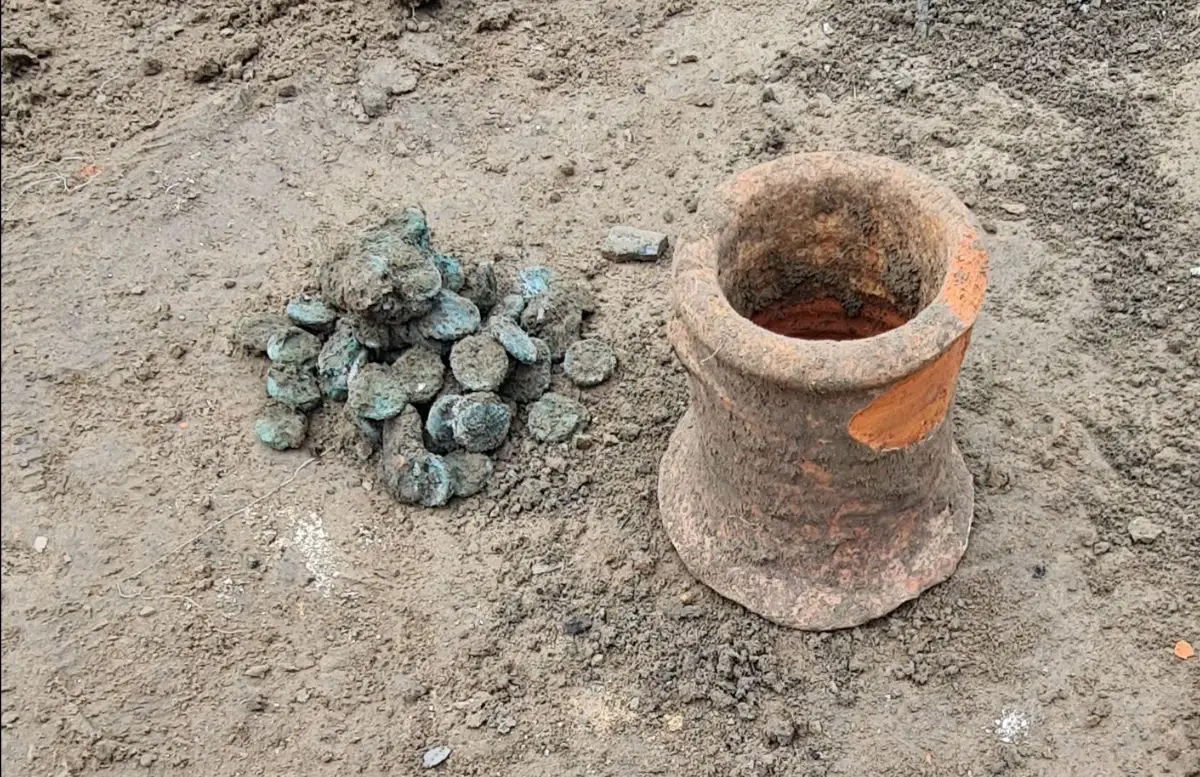Archaeologists from the Institute of Archaeology of the Russian Academy of Sciences have announced the discovery of a coin hoard in the ancient city of Phanagoria.
Phanagoria was founded by Teian colonists around 543 BC, and developed into a Greek centre of trade between the coast of the Maeotian, and the countries on the southern side of the Caucasus.
The coin hoard was discovered during the third season of excavations, where archaeologists unearthed an amphora containing 80 copper staters (coins), whilst researching evidence of a destruction layer caused by fire from the 6th century AD.
Archaeologists believe that the burying of the hoard could be associated with several raids by the Huns or Turks, resulting in large parts of the city being torched. Residential buildings, wineries, and public buildings perished in the fire, depositing a large amount of ash, soot, fragments of burnt wooden floors of buildings, broken dishes, and the remains of burnt grain in amphorae in the destruction layer.
The Byzantine writer Procopius of Caesarea noted that Kepa and Phanagoria were “taken and destroyed to the ground by the barbarians who lived in neighbouring lands”. Some researchers associate the events described by Procopius of Caesarea with the nomadic Huns.

According to another version, the destruction of the cities of Kepa and Phanagoria, reported by Procopius of Caesarea, took place already in the middle of the 6th century, when the Avars who fled under the pressure of the Turks approached the Asian Bosporus: a message about this event is found in Evagrius Scholastica’s “Church History”. The Turks themselves appear on the Bosporus in the AD 570s.
Vladimir Kuznetsov of the Russian Academy of Sciences said: “According to the composition of the treasure, one can determine what money was in use in the internal market of the Bosporus in the 6th century.”
A closer inspection of the coins reveals that they are mainly copper staters of the Bosporan kings of the late 3rd – early 4th century AD. The last minting of the Bosporan coins was around AD 341, however, a huge mass of staters made of cheap copper-lead alloy continued to circulate in the Bosporus for several centuries, whilst the role of “expensive” money was played by Byzantine gold.
Institute of Archaeology of the Russian Academy of Sciences
Header image Credit : Institute of Archaeology of the Russian Academy of Sciences







